
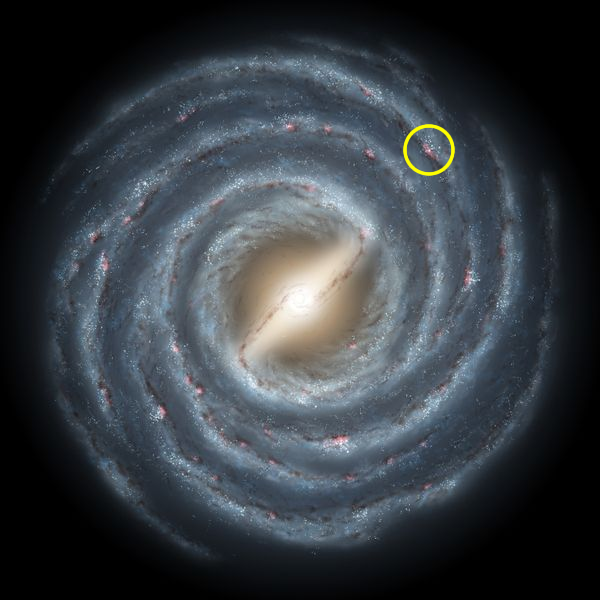
This is the most recent concept drawing of the Milky Way galaxy. The yellow circle represents the location where our solar system is believed to reside, on the Orion Arm. The Milky Way is visible from Earth as a hazy band of white light that is seen in the night sky, arching across the entire celestial sphere, the visual phenomenon of the Milky Way originates from stars and other material which lies within the galactic plane. The Milky Way looks brightest in the direction of the constellation of Sagittarius, toward the galactic center. Relative to the celestial equator, it passes as far north as the constellation of Cassiopeia and as far south as the constellation of Crux, indicating the high inclination of Earth's equatorial plane and the plane of the ecliptic relative to the galactic plane. The fact that the Milky Way divides the night sky into two roughly equal hemispheres indicates that our Solar System lies close to the galactic plane. The Milky Way has a relatively low surface brightness, making it difficult to see from any urban or suburban location suffering from light pollution.

This is a 360º degree view of the Milky Way's horizon.
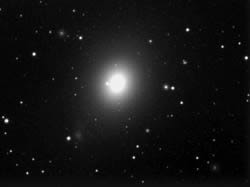
Messier 49 in Virgo
Elliptical galaxies are characterized by several properties that make them distinct from other classes of galaxy. The motion of stars in elliptical galaxies is predominantly radial, unlike the disks of spiral galaxies, which are dominated by rotation. Furthermore, there is very little interstellar matter, which results in low rates of star formation, few open star clusters, and few young stars; rather, elliptical galaxies are dominated by old stellar populations, giving them red colors. Large elliptical galaxies typically have an extensive system of globular clusters.
The properties of elliptical galaxies and the bulges of disk galaxies are similar, suggesting that they are formed by the same physical processes, although this remains controversial. Elliptical galaxies are preferentially found in the cores of galaxy clusters and in compact groups of galaxies.
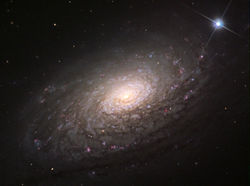
Messier 63 (Sunflower Galaxy) in
Canes Venatici
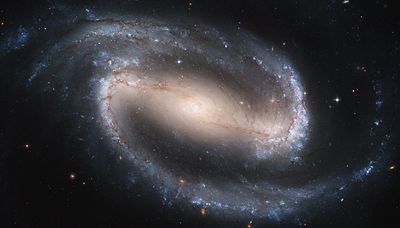
NGC 1300 in Eridanus
Edwin Hubble classified these types of spiral galaxies as "SB" ("Spiral", "Barred") in his Hubble sequence, and arranged them into three sub-categories based on how open the arms of the spiral are. SBa types feature tightly bound arms, while SBc types are at the other extreme and have loosely bound arms. SBb type galaxies lie in between. A fourth type, SBm, was subsequently created to describe somewhat irregular barred spirals, such as the Magellanic Cloud galaxies, which were once classified as irregular galaxies, but have since been found to contain barred spiral structures.
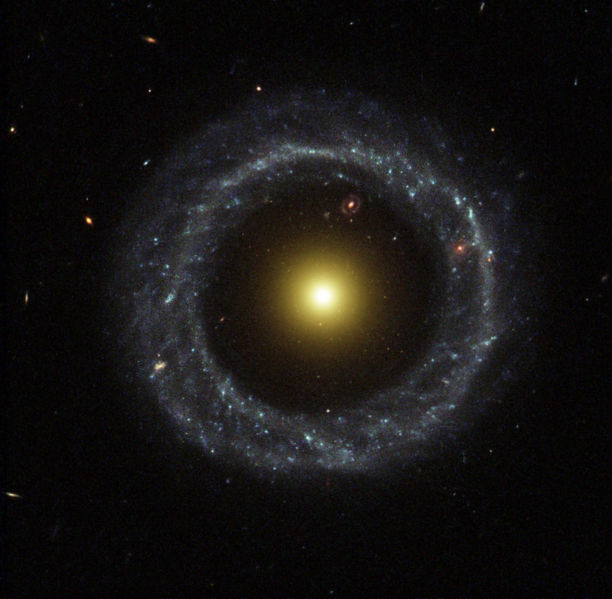
Hoag's Object in Serpens
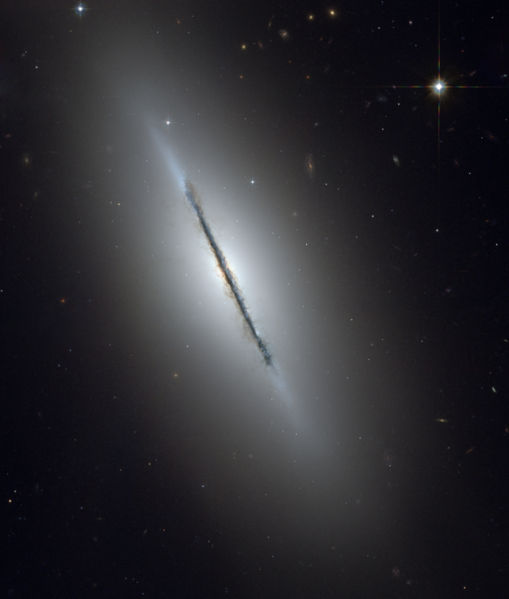
NGC 5866 (Spindle Galaxy) in Draco
Although lenticular galaxies do not vary in shape as much as spiral galaxies, they may still be divided into a series of subclasses based on their appearance.
In the de Vaucouleurs classification system, lenticular galaxies may be split into three subclasses based on the presence or absence of a central bar structure. The SA0 designation is used for lenticular galaxies with no apparent bars. The SB0 designation is used for galaxies with a strong bar. The SAB0 designation is an intermediate class that may be referred to as weakly barred.
Some lenticular galaxies are also given inner ring (S0(r)) and S-shaped (S0(s)) designations as well as an intermediate designation (S0(rs)). However, these designations were defined primarily for spiral galaxies, and finding objects that represent some of these classes is very difficult.
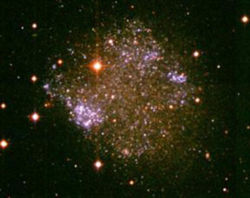
Sextans A in Sextans
An irregular galaxy is a galaxy that does not fall into any of the regular classes of the Hubble sequence. These are galaxies that feature neither spiral nor elliptical morphology. They are often chaotic in appearance, with neither a nuclear bulge nor any trace of spiral arm structure. Collectively they are thought to make up about a quarter of all galaxies. Most irregular galaxies were once spiral or elliptical galaxies but were deformed by gravitational action.
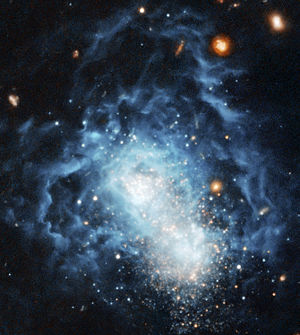
I Zwicky 18 in Ursa Major

Messier 82 (Cigar Galaxy) in Ursa Major

Messier 51 (Whirlpool Galaxy) shows satellite
interaction with NGC 5195 in Ursa Major
Satellite interaction - A giant galaxy interacting with its satellites is common. A satellite's gravity could attract one of the primary's spiral arms. Or even the satellite could dive in to the primary. This could trigger a small amount of star formation. The satellite could be a vacuum cleaner and suck up some of its primary's stars or vice versa.
Galaxy collision - Colliding galaxies are common in galaxy evolution. Colliding may lead to merging. Merging is the most violent of all galaxy interactions. This occurs when two galaxies collide and do not have enough momentum to continue traveling after the collision. Instead, they fall back into each other and eventually merge together, forming one galaxy. If one of the colliding galaxies is much larger than the other, it will remain largely intact after the merger; that is, the larger galaxy will look much the same while the smaller galaxy will be stripped apart and become part of the larger galaxy. Collisions are less violent than mergers in that both galaxies remain separate after the collisions.
Galactic cannibalism - Refers to the process by which a large galaxy, through tidal gravitational interactions with a companion, merges with that companion, resulting in a larger, often irregular galaxy. The most common result of the gravitational merger of two or more galaxies is an irregular galaxy of one form or another, although elliptical galaxies may also result.
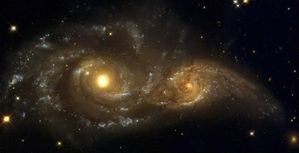
NGC 2207 (left) and IC 2163 (right) in
Canis Major are colliding galaxies